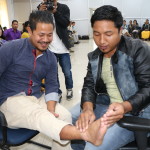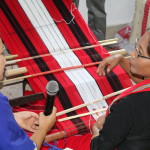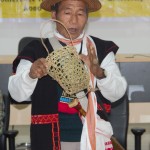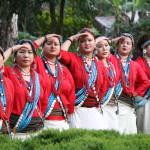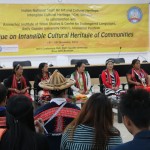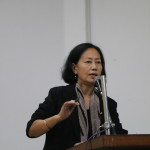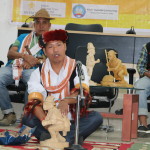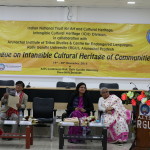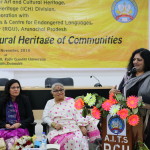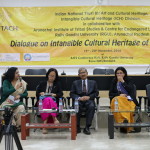‘Dialogue on Intangible Cultural Heritage of Communities’ – Arunachal Pradesh Back
INTACH ICH Division, in collaboration with Arunachal Institute of Tribal Studies (AITS), Rajiv Gandhi University (RGU), Itanagar, Arunachal Pradesh, organized a two-day workshop titled – ‘Dialogue on Intangible Cultural Heritage of Communities’ on 19th – 20th November 2018. The objective behind this workshop was to engage with the communities and explore ways by which their intangible heritage can be protected and promoted.
Speaking at the inaugural ceremony as chief guest, RGU Vice Chancellor Professor A Mitra emphasized the importance of organizing such programs along with academic works.
Addressing the gathering, Nerupama Y. Modwel, Director of ICH division, INTACH, spoke on how community memories are essential and steps to preserve and understand them should be taken seriously. She stressed on the need to create a network of community resources which could evolve into an ‘organic database’. She said that the primary challenge is how to get the youth interested in the discourse on cultural heritage, adding that promotion and creating awareness were keys to achieve this.
In her keynote address titled ‘Unseen but Felt: This Continuum of Culture’, renowned poet and professor at Delhi University, Prof. Sukrita Paul Kumarspoke about the need to include culture and folklores in the curriculum to make the younger generations more aware about their culture and identity. She suggested that a mentorship program be initiated, with traditional practitioners as mentors.
Dr. Shiela Bora, Convener, Assam Chapter INTACH, spoke on integrating modernity with tradition, so that cultural heritage will be kept alive and preserved in its original and unique form.
Mamang Dai, noted poet and author and Chief Guest for valedictory session said the culture of any community is in a complex state of evolution and there is bound to be cultural changes.
Interactive sessions and demonstration by artisans (wood carving & basketry), folk artists, weavers, indigenous chiropractors, shamans, and bead workers from Adi, Idu Mishmi, Galo, Nyishi, and Nocte tribal communities were conducted where participants spoke at length on the difficulties that they face in pursuing these dying traditional art forms.
An installation, demonstration and display of Opo/Apong (traditional knowledge of brewing) were followed by the Kit Laam Dance of Rongmei Naga and a Galo folk performance.
A key feature of the workshop was the discussion on ‘way forward’ for retention of indigenous culture, interaction amongst all the CRPs on learning from each other and suggestions on overcoming the challenges were unanimously agreed by the participating members. The discussions also stressed on the fact that collaborations with the communities are essential in bringing out a more constructive output. The findings from this workshop will be collated in a resolution to hand over to the state authorities. This will also impact the state cultural policy being prepared by AITS.



